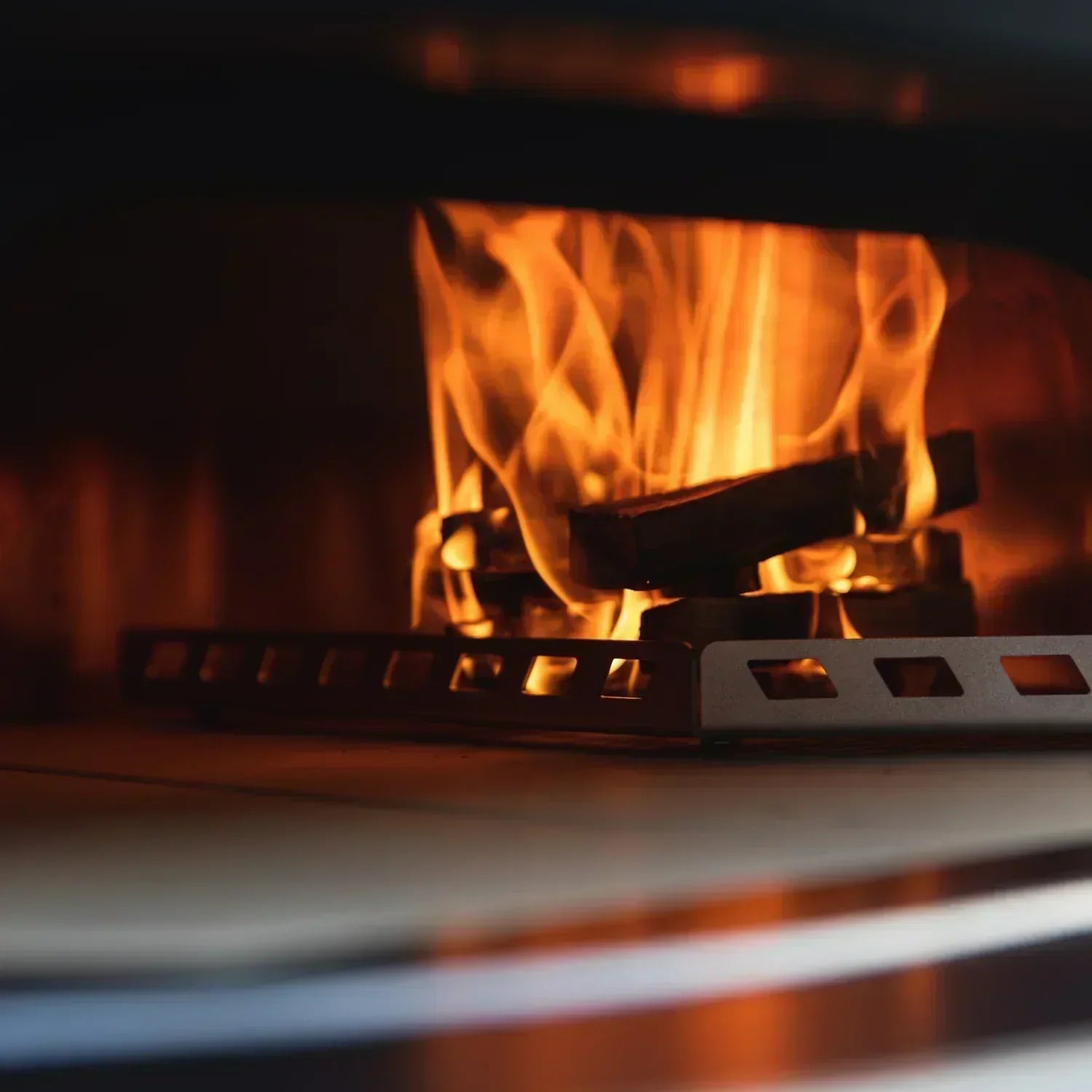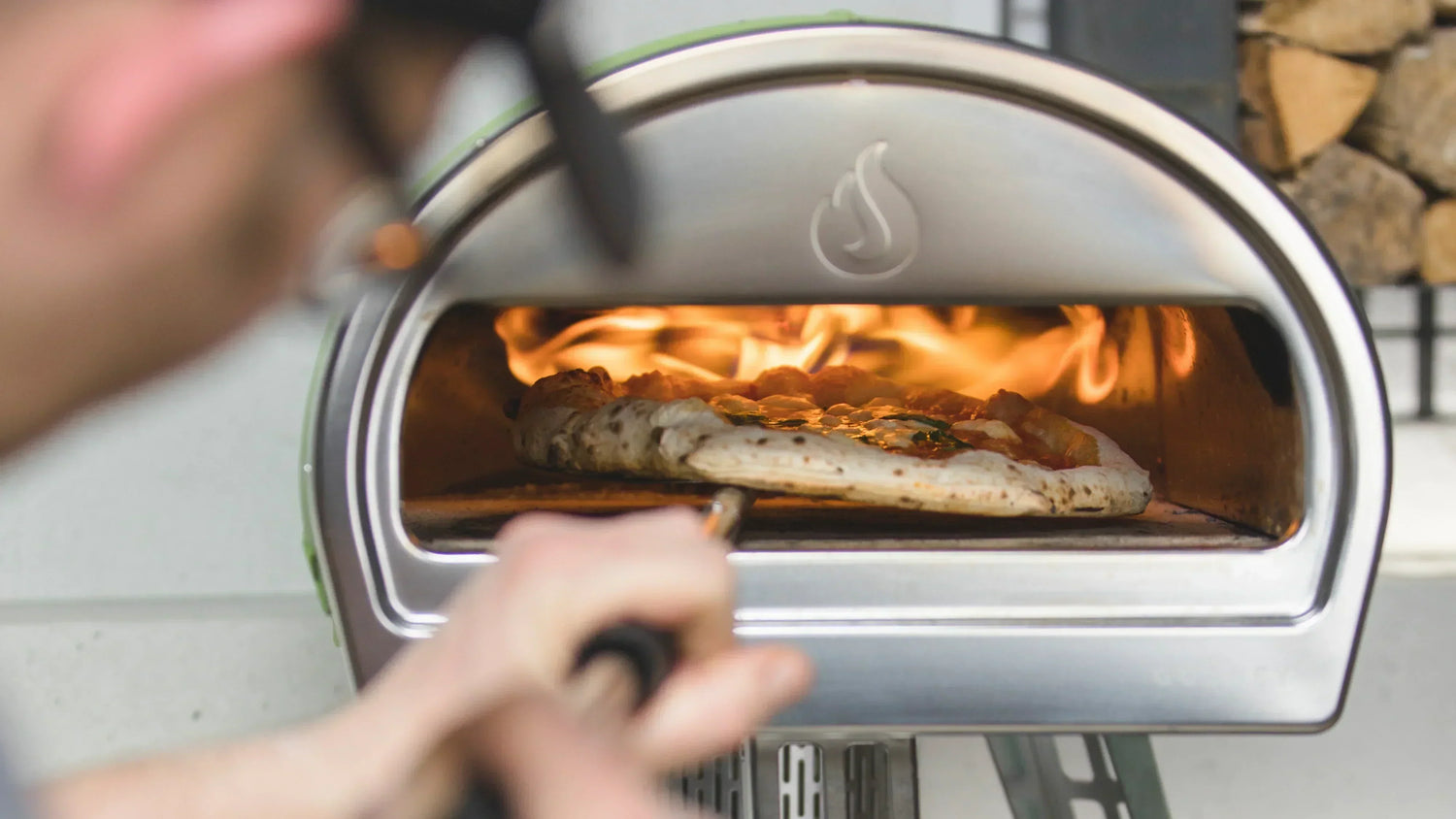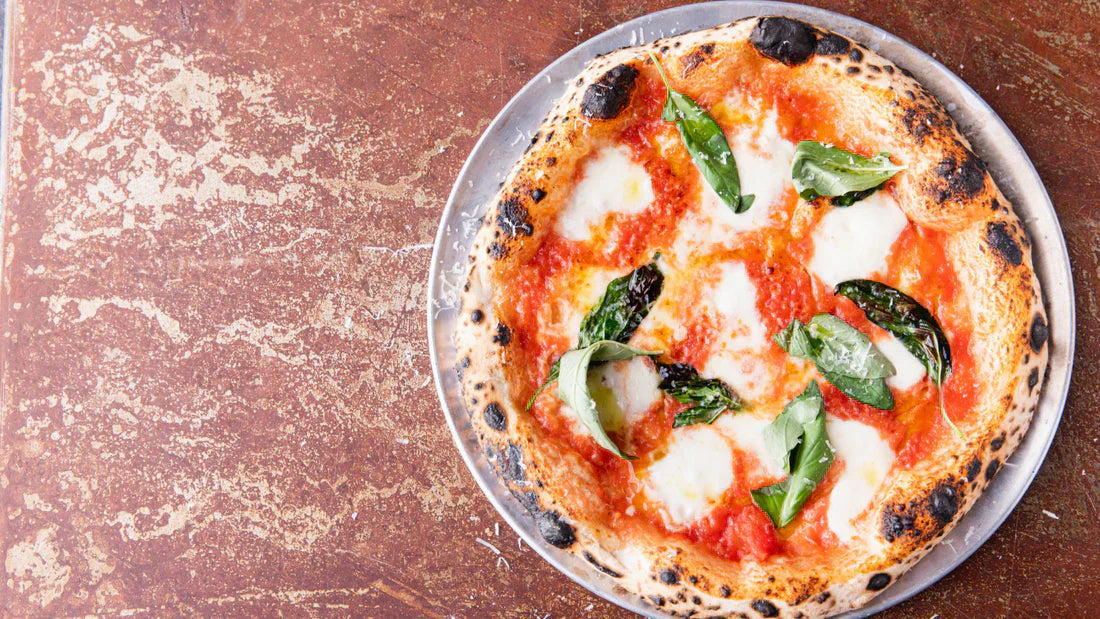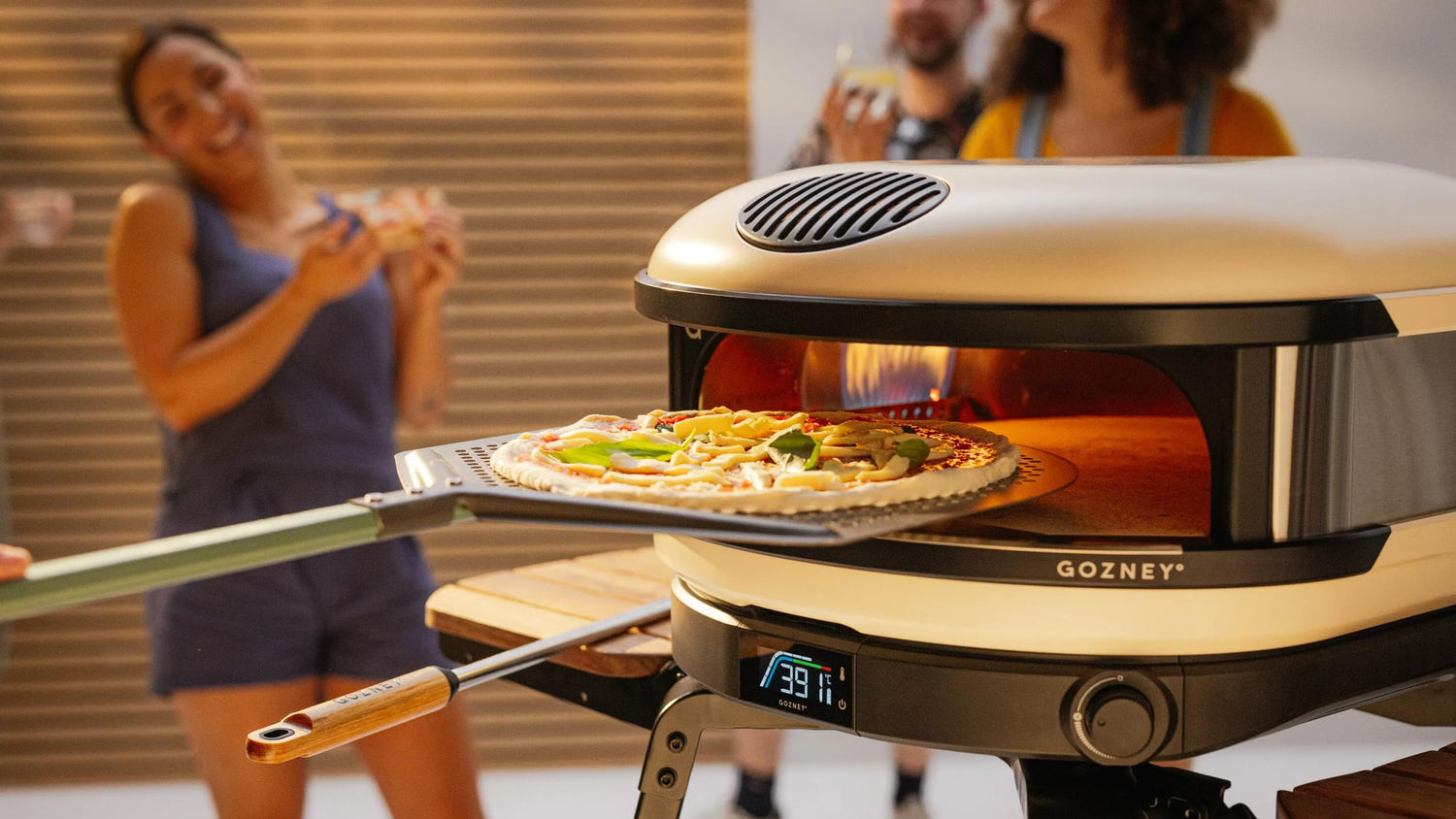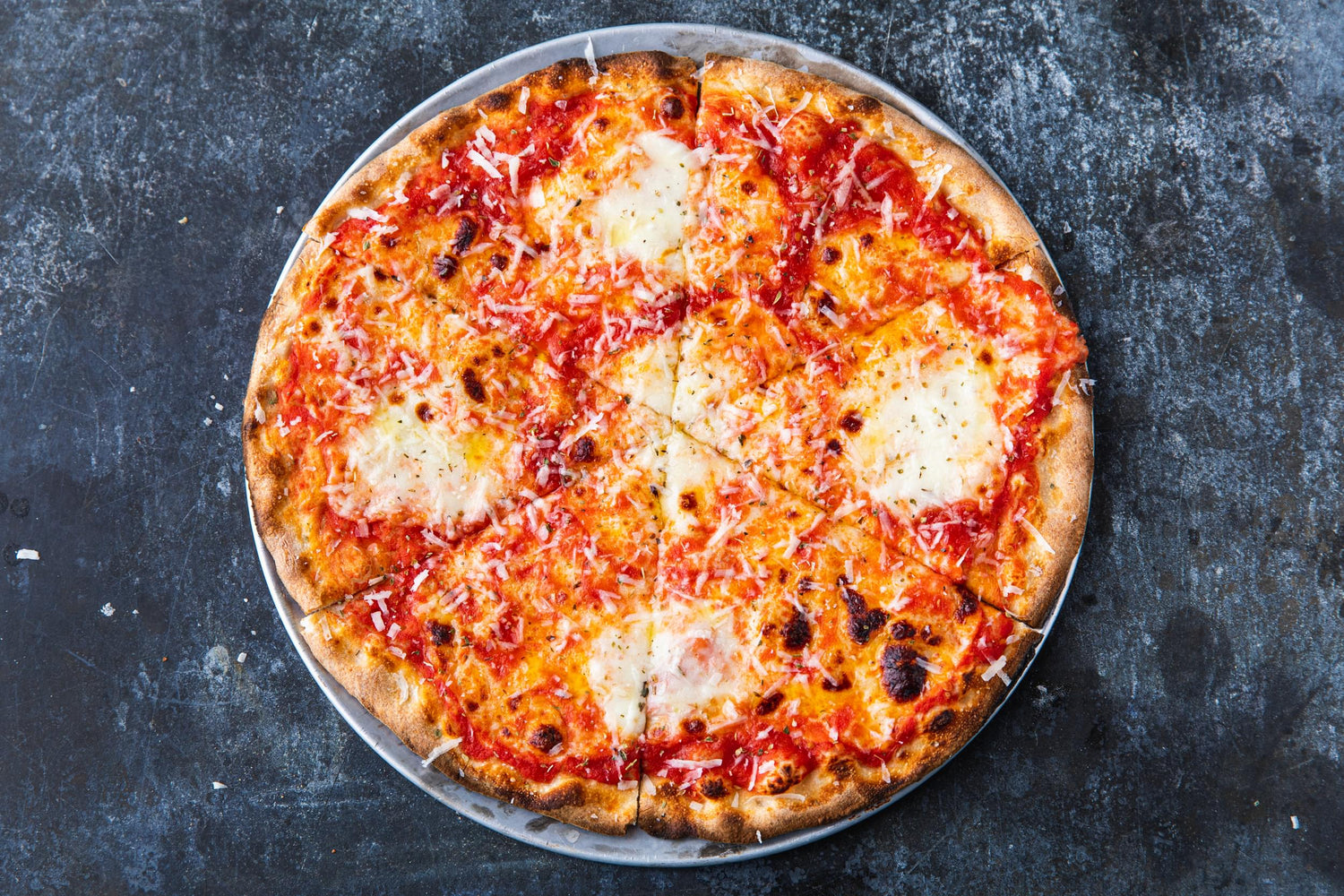When it comes to making pizza at home, nothing beats the crispy crust and delicious toppings achieved by a perfectly heated pizza oven. The pizza oven temperature is the secret ingredient behind restaurant-quality pizzas right in your backyard. In this guide, we'll explore how hot a pizza oven can get, why temperature matters so much, and how to use your oven effectively. Whether you're thinking about purchasing your first home pizza oven or looking to improve your current cooking skills, understanding temperature is crucial for pizza-making perfection.
Why Do Pizza Ovens Need to Be Hot?
The heat in a pizza oven isn't just for show—it dramatically affects the taste and texture of your pizza. A high pizza oven degree typically ranging from 600°F to 900°F (315°C-482°C) ensures your pizza cooks rapidly, usually within just 60 to 90 seconds. But why is speed important?
Fast cooking creates a perfect crust: crispy outside and soft, chewy interior. It also ensures toppings retain their fresh flavors and vibrant colors, avoiding the mushiness that often results from slower cooking methods. Meats crisp up beautifully, veggies retain their crunch, and cheese melts perfectly to a golden, bubbly consistency.
A hot pizza oven also significantly affects how pizza dough rises. The intense, direct heat quickly causes the dough to puff up, creating delightful air pockets that are iconic in traditional Neapolitan pizza. Lower heat pizza ovens, by contrast, bake pizzas slowly, resulting in denser, drier crusts that don't quite deliver the same gourmet experience.
If you’re wondering, are pizza ovens worth it, their ability to deliver high-quality, restaurant-style pizza quickly and consistently proves they’re a worthy investment for any pizza enthusiast.

What Temperature Do Pizza Ovens Reach?
Understanding exactly what temperature pizza oven you're working with is essential. All pizza ovens commonly reach impressive temperatures, but the exact range can vary depending on the fuel type, oven model, and even where you use the oven.
Knowing the temperature range your pizza oven can achieve is critical for making perfect pizzas. Generally, pizza ovens are designed to reach high temperatures, typically ranging from around 500°F (260°C) up to as high as 900°F (482°C), depending on the specific oven model and its intended use.
Compared to conventional indoor ovens, which are designed for safety and convenience, and therefore don’t reach the high extremes of outdoor ovens, primarily because of ventilation and safety standards. Outdoor ovens, however, leverage natural airflow, making them capable of achieving and sustaining higher temperatures. So if you’re passionate about achieving authentic, restaurant-quality pizzas, outdoor pizza ovens are generally more favorable.

How Hot Are Pizza Ovens Compared to Regular Ovens?
Ever wondering exactly how hot are pizza ovens compared to your regular kitchen oven? Regular home ovens usually max out around 500°F to 550°F (260°C to 290°C). Pizza ovens significantly exceed these temperatures, creating an environment perfect for cooking pizza quickly and authentically.
|
Oven Type |
Maximum Temperature |
Cooking Time (Pizza) |
|
Regular Oven |
<500°F (260°C) |
8-15 minutes |
|
Pizza Oven |
500°F-900°F (260-485°C) |
60-90 seconds |
Unlike regular ovens, which typically heat up slowly and unevenly, pizza ovens reach desired temperatures and hold heat effectively due to superior insulation and materials. These ovens remain hotter for longer, enabling multiple pizzas to be cooked rapidly without significant temperature drops between cooking cycles.
Specifically engineered to achieve and maintain consistently high temperatures—up to 950°F (500°C)—, Gozney Pizza Ovens all feature a specialized dome shape design and advanced materials that promotes heat circulation, ensuring pizzas cook evenly without hot or cold spots.
The thick stone cooking floor featured in Gozney Pizza Ovens is designed to absorb and distribute heat uniformly, creating perfectly crispy crusts every time. Dense insulation in the pizza oven walls effectively traps heat, minimizing heat loss and sustaining stable temperatures throughout cooking.
Gozney Pizza Ovens also provide precise temperature control through innovative rolling gas flames or the ability to switch between gas and wood in dual-fuel models, giving users flexibility to achieve specific cooking conditions.
Digital thermometers display accurate readings of the oven’s internal temperature, eliminating guesswork and allowing precise heat management. The Gozney Dome Pizza Oven also includes meat probes, enabling cooks to expand their culinary repertoire with precision.
Unlike regular home ovens, which heat unevenly and slowly, Gozney pizza ovens rapidly reach higher temperatures and consistently retain heat, delivering authentic pizzeria-quality results directly from your own backyard.

Do Different Pizza Styles Require Different Cooking Temperatures?
Absolutely! Not all pizzas are created equally, and their cooking temperatures shouldn’t be either. Knowing the best temperatures for your pizza style helps you craft the ideal crust and topping textures.
Thin crust pizzas: These pizzas are best cooked at higher temperatures around 800°F to 900°F. The fast, intense heat creates a crispy yet airy crust with slightly charred edges, a hallmark of Neapolitan-style pizzas.
Deep-dish pizzas: Chicago-style deep-dish pizzas typically require lower temperatures, around 400°F to 450°F, with longer cook times. This method allows the thicker crust and abundant toppings to cook thoroughly without burning the exterior.
Pizza size and toppings: Larger pizzas or those with many toppings typically benefit from slightly lower temperatures and longer cooking times to ensure everything cooks evenly. Conversely, smaller pizzas or those with fewer toppings can be cooked at higher temperatures to retain freshness and crispness.
When experimenting with different recipes, adjusting temperature based on toppings is key. Heavier ingredients, such as meats or dense vegetables, might need slightly lower temperatures for thorough cooking, while lighter toppings, like basil or thinly sliced veggies, thrive at higher heat for shorter durations.
Gozney ovens support a wide range of cooking temperatures, ideal for various pizza styles. With dual-fuel options, precise digital thermometers, and superior insulation, they easily adjust from high heat for thin crusts to lower temps for deep-dish pizzas—offering flexibility, consistency, and control for perfect results every time.
To explore delicious combinations and cooking guidelines, check out our pizza recipes at Gozney.
Summary
Let’s recap what we’ve covered to ensure you master the art of pizza oven temperature at home:
- Pizza ovens operate at significantly higher temperatures (700°F-900°F) compared to regular home ovens (500°F).
- High heat provides rapid cooking, optimal crust texture, and perfect topping consistency.
- Pizza oven temperatures vary by fuel type, wood choices, and usage environment (indoor vs. outdoor).
- Different pizza styles require specific temperatures for best results (e.g., thin crust at higher heat, deep dish at lower heat).
Ready to take your pizza-making skills to the next level? Discover more about outdoor pizza ovens from Gozney and start your journey towards creating authentic, delicious pizzas at home.

